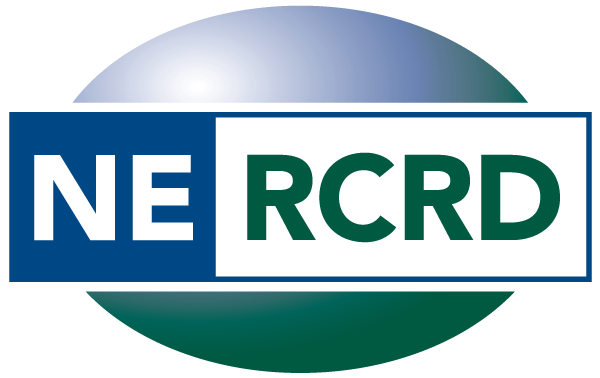
Rural manufacturing exports linked to innovation
April 2, 2025
While rural areas are more dependent on manufacturing than their urban peers, they are less likely to participate in global markets. NERCRD researchers have identified several factors that explain why, with differences in innovation capacity — the share of workers in occupations associated with greater patent production and the extent to which a location fosters inter-industry idea exchange — playing the most significant role. Their findings, published this week (March 30) in the Journal of the Agricultural and Applied Economics Association, can be used to evaluate whether current federal policies and investments are well-positioned to help close the rural-urban export gap, the team said.
Exports are an important dimension of the nation’s overall economic performance, as they are an indicator of international competitiveness and they diversify the customer base that helps grow the economy, according to Luyi Han, a postdoctoral researcher with the NERCRD and Penn State’s College of Agricultural Sciences, who led the study. Rural export performance matters in particular because U.S. manufacturing is becoming more concentrated in rural areas, and manufactured goods dominate export markets, Han said. Understanding the reasons why rural firms aren’t keeping up with urban firms is critical to knowing whether and how investments and policies can address the gap, he said.
“Billions of dollars have been appropriated for programs that directly and indirectly seek to address the competitiveness of U.S. manufacturing. For example, the Infrastructure Investment and Jobs Act can potentially improve access to global markets by addressing transportation and broadband challenges often faced by rural businesses,” Han said. “Our study reveals that innovation capacity, particularly the presence of workers in inventive occupations, explains a significant portion of the urban-rural export gap. While place-based policies focusing on enhancing rural innovation ecosystems show promise, our findings suggest the export advantage of urban areas may also stem from structural factors that aren’t easily addressed through policy interventions alone.”
In the study, researchers identified the factors that are most strongly correlated with the export performance difference between metro and nonmetro firms. Metro areas refer to large cities and the densely populated regions surrounding them, as well as smaller cities with large populations. Nonmetro areas refer to smaller towns with fewer people as well as completely rural locations. Firms refer to for-profit commercial enterprises.
The researchers merged two datasets from the Penn State Census Research Data Center to identify and categorize U.S. firms that engaged in exports from 2017 to 2020. They then used a statistical model to examine the extent to which more than a dozen firm-level and place-based factors could explain the differences in exporting activity between metro and nonmetro firms. The 2018 Annual Business Survey, administered jointly by the National Center for Science and Engineering Statistics and the U.S. Census Bureau, collects firm-level information on innovation activities, firm ownership details and firm characteristics. The Longitudinal Firm Trade Transactions Database contains import-export transaction records that can be linked to individual firms by unique firm identifiers.
Exerting the strongest effect in their analysis was the share of an area’s workforce that belongs to the “inventive class,” or the people engaged in STEM and other occupations strongly linked to patent production. Another strongly influential factor was an area’s potential for “latent innovation,” which refers to the gradual improvements to products and processes that businesses achieve by applying information they’ve gained from external sources. Latent innovation thrives in areas that foster interaction across various industries, enabling the exchange of ideas. Taken together, these two variables strongly influence a location’s overall innovation capacity, said co-author Timothy Wojan, an Oak Ridge Institute for Science and Education Established Scientist Fellow at the National Center for Science and Engineering Statistics (NCSES) within the U.S. National Science Foundation (NSF).
“We found that workforce shares of inventive class and latent innovation scores are both higher in metro areas and were significantly correlated with the greater export intensity playing out in those areas,” Wojan said. “While latent innovation would be difficult to address from a policy perspective as it is dependent on the co-location of many different industries, policies aimed at developing, retaining and recruiting workers in STEM can expand the geography of innovation and contribute to rural exports. There is evidence that patent-intensive manufacturing industries locating in rural areas do employ a relatively high share of the inventive class.”
In addition to their finding about innovation capacity, the researchers also found that firms owned by immigrants were far more likely to engage in exports than those owned by non-immigrants.
“This finding makes sense, intuitively, because immigrants are more likely to have relationships in other countries that can facilitate exporting and are perhaps more comfortable with marketing their product globally,” Han said. “Cities attract more immigrants, in general, and this probably contributes to an advantage that metro areas seem to have in the exports market. We found that firms with foreign-born owners are three times more prevalent in cities than in rural areas.”
Zheng Tian, assistant research professor at Penn State, and Stephan J. Goetz, professor of agricultural economics and regional economics at Penn State and director of the NERCRD, also contributed to this research.
The U.S. Department of Agriculture’s National Institute of Food and Agriculture and Multistate/Regional Research and Extension Appropriations and the Oak Ridge Institute for Science and Education supported this research in part.
